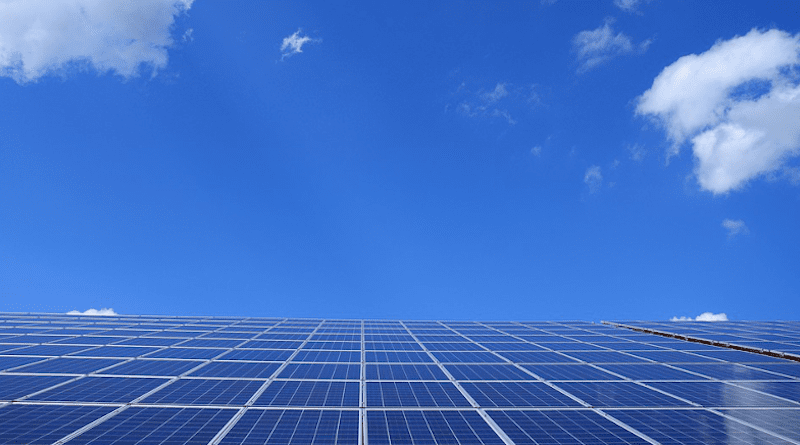What Should Indonesia Learn From China’s Solar Power Panels Strategy? – OpEd
A study by Diwangkara Bagus Nugraha and Zulfikar Rakhmat in 2020 showed that the acceleration of renewable energy in Indonesia was slow. Their research also underlined that Indonesia’s renewable energy only covered 8.8 percent of national target in 2025. In fact, Indonesia’s energy has depended on coal-based.
At the end of April 2021, the Executive Director of the Institute for Essential Service Reform (IESR), Fabby Tumiwa, revealed that the demand for solar panels in the world tends to grow rapidly. However, the development of global trends cannot be utilized by Indonesia to produce larger solar panels.
One of the biggest problems is the scarcity of investors to invest in Indonesia. This fact was confirmed by the Minister of Energy and Mineral Resources (ESDM) of the Republic of Indonesia Arifin Tasrif in May 2021, who argued that, “The capability of the domestic solar industry is only at the solar module assembly stage and is still on a small economic scale. The inverter still cannot be produced domestically.” According to Tasrif, to attract investment in the upstream solar panel sector, it is necessary to create a significant market by trying to build the PV mini-grid market.
This phenomenon is certainly a concern for the Indonesian government, to be able to compete competitively in the global game. Of course, as a strong benchmark, the Indonesian government must learn from China. According to Fabby Tumiwa, Director of IESR, the domestic solar panel production capacity is around 500 MW per year.
This has a very low utilization rate, with domestic solar panel modules being 40% more expensive than imported modules.
The reason for the price of modules abroad can be cheaper, because the solar panel industry abroad has been integrated from upstream to downstream. These criteria already exist and work in China.
In China, about a third of the polysilicon solar panel industry comes from Xinjiang. Most of the solar panels sold to the EU market are based on photovoltaic (PV) cell materials. The trade circulation is indeed China’s solar power diplomacy for humanitarian programs and ‘environmentally friendly’ countries.
Historically, in the early 1990s, China’s solar power has indeed been able to have significance in the dominance of the European market based on expertise and manpower. As a result, in its development a Chinese company, Chinese JinkoSolar Holding Co. Ltd., can influence the dominance of this solar energy industry.
In 2008 during the economic crisis the Chinese government recognized the growing need for sustainable technology and its development, backed by extensive policies that helped preserve companies making a combination of economic and political gain. Solar power companies like JinkoSolar have become one of the most valuable companies exporting Chinese solar products. This is where the most important factor that pushes Chinese companies to dominate – government involvement and policy push for companies to be more competitive and which saves them from the economic crisis.
In 2009, China’s investment in environmental stewardship increased by 15% annually to reach 1.33% of GDP. Furthermore, the government established a credit rating system for corporate environmental behavior, established a green rating system in banks, and explored the mechanism of funds allocated for national ecological compensation. As a result, China’s domestic market is growing consistently.
The role of China’s solar diplomacy has the effect of changing China’s image as a polluted country. Another factor influencing the growth of China’s solar manufacturing industry and its dominance in the world is the momentum in which the revolution took place which helped preserve companies in the international market.
Through the basic strategy of China’s feed-in tariff system, introduce a solar power generation pricing mechanism. Basically, the pricing formula is a cost-based model, taking into account regional average project costs and a fixed internal rate of return (IRR). Despite the tariffs, China has managed to outpace German production in 2015 as well as the United States due to its enormous capacity and growing market for its products. China is a leader in the solar energy trade and in building its technology around the world, as well as being a pioneer in patents related to solar power.
Back in 2021, the Chinese government built numerous offshore wind turbines and made China as a leader of producer and processor of the rare earth minerals essential for the magnets that power turbine generators. Report by IEA also revealed that recent unexpected manufacturing halts in China have resulted in the price of polysilicon rising to 10-year highs, revealing the world’s dependence on China for the supply of key materials.
China’s mastery of solar diplomacy in the field of renewable energy comes at the same time as the US withdrawal from the Paris Agreement. Opens up new opportunities for China to be more involved in environmental policies in international organizations. This is not surprising because green policies have a major influence in developing countries in Africa or EU member states where China is seeking to expand its presence.
This kind of economic influence in trade and manufacturing can be compared to the impact of China’s toy production at the beginning of this century and which is significantly correlated with the China Dream slogan, President Xi in his speech said that, “China has a tendency to spread its influence in the international arena for decades now.
The Green New Deal and the overall increasing significance of the green economy and renewable energy can be used as part of China’s tactics. Government involvement in the economy and private enterprises could have a major impact on China’s future position as a great power.

